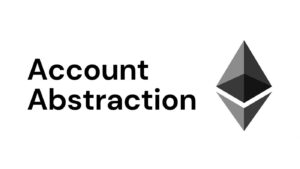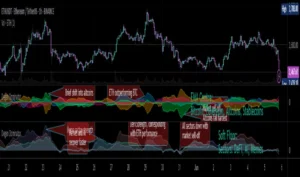Just a few years ago, blockchain was mostly a term confined to niche cryptocurrency forums and startup pitch decks. It was hailed as a revolutionary technology but was often dismissed as hype by mainstream institutions. Today, the narrative has dramatically shifted. Blockchain is no longer just the foundation of Bitcoin or Ethereum—it is fast becoming the backbone of global systems, quietly powering solutions in finance, logistics, healthcare, and governance.
As we move deeper into the digital era, the technology that once seemed like a passing trend is proving to be a cornerstone of tomorrow’s infrastructure. So, what triggered this transition from buzzword to backbone?
The Basics: What Makes Blockchain So Powerful?
At its core, blockchain is a decentralized, distributed ledger that records transactions in a secure, transparent, and immutable way. This unique architecture allows for:
- Trustless interaction between parties
- Tamper-proof data storage
- Efficient auditing and verification
- Decentralization of control
These features have significant implications not just for financial systems, but for any domain that relies on trustworthy data and secure transactions.
Financial Sector: Blockchain’s First Proving Ground
Finance was the first major battleground—and blockchain is winning. The emergence of decentralized finance (DeFi), smart contracts, and tokenized assets has reshaped how capital flows across borders.
Key Transformations:
- Cross-border Payments: Traditional remittances are expensive and slow. Blockchain enables near-instant, low-cost transfers using stablecoins and Layer 2 networks.
- Tokenization of Assets: Real estate, stocks, and commodities are now being tokenized, increasing liquidity and broadening access to investment markets.
- CBDCs (Central Bank Digital Currencies): Over 130 countries are exploring CBDCs, with pilot programs live in China, Nigeria, and India—all built on blockchain or distributed ledger tech.
Financial institutions like JPMorgan, HSBC, and Visa have already deployed blockchain solutions, shifting the tech from the sidelines to center stage.
Beyond Finance: A Silent Revolution in Other Sectors
Blockchain’s capabilities extend far beyond crypto and finance. Across multiple industries, it’s enabling transparency, accountability, and automation at scale.
1. Supply Chain & Logistics
Supply chains are notoriously complex and opaque. Blockchain introduces traceability and trust:
- Food Safety: Walmart uses blockchain to track produce from farm to shelf in seconds, not weeks.
- Anti-Counterfeiting: Luxury brands and pharmaceutical companies use blockchain to verify authenticity.
2. Healthcare
In healthcare, secure data handling is mission-critical. Blockchain allows for:
- Immutable medical records accessible across providers
- Transparent vaccine tracking (used in pilot projects during the COVID-19 pandemic)
- Consent management for sensitive data
3. Governance & Identity
Governments are waking up to blockchain’s potential in public administration:
- Digital identity systems (like Estonia’s e-Residency)
- Land registry on-chain, reducing fraud and disputes
- Voting systems—pilots in South Korea and Utah are testing blockchain-based voting for increased transparency
Blockchain in the Web3 Era: Fueling Decentralization
Web3, the decentralized evolution of the internet, is built almost entirely on blockchain foundations. It envisions a digital landscape where users control their data, creators own their content, and value flows freely without centralized gatekeepers.
Examples Include:
- NFTs & Digital Ownership: Authenticating digital art, music, and virtual real estate.
- DAOs (Decentralized Autonomous Organizations): Democratizing decision-making for communities and companies.
- Decentralized Cloud Storage: Platforms like Filecoin and Arweave store data across distributed nodes.
In the Web3 world, blockchain is not a support technology—it is the foundation.
The Geopolitical Stakes: Blockchain and National Strategy
Blockchain is now a matter of national interest. From energy security to tech sovereignty, countries are racing to position themselves as blockchain leaders.
- China has launched its Blockchain-based Service Network (BSN), aiming to become the global infrastructure layer for blockchain applications.
- The European Union is investing in digital identity frameworks and blockchain-based notarization.
- The U.S., while slower on regulation, is seeing a surge in enterprise blockchain initiatives and academic research.
This strategic adoption signals that blockchain isn’t just a commercial technology—it’s a geopolitical asset.
Challenges on the Road Ahead
Despite the promise, blockchain adoption still faces headwinds:
- Scalability: Networks like Ethereum are still working on scaling solutions (e.g., sharding, rollups) to handle global traffic.
- Regulation: Legal clarity is lacking in many jurisdictions, especially concerning DeFi and DAOs.
- Interoperability: A fragmented blockchain landscape needs better cross-chain communication.
However, continuous innovation—like the rise of Layer 2 solutions, zero-knowledge proofs (zk-SNARKs), and cross-chain bridges—is steadily addressing these challenges.
The Future: Embedded in Everything?
The trajectory is clear: blockchain is embedding itself in the digital infrastructure of the modern world. Soon, the term “blockchain” may fade from the headlines—not because it’s gone, but because it will be everywhere, operating silently in the background, like electricity or the internet.
From logistics to law, healthcare to housing, banking to voting, blockchain’s role is no longer speculative. It’s structural.
Conclusion: From Disruption to Integration
The transition of blockchain from a disruptive buzzword to a fundamental layer of global systems is a testament to its versatility and resilience. While the road is far from smooth, the momentum is undeniable. Blockchain is no longer a question of if—but how far it will go.
As institutions, governments, and communities continue to integrate this transformative technology, one thing becomes certain: the chain is only just beginning to bind the future together.









